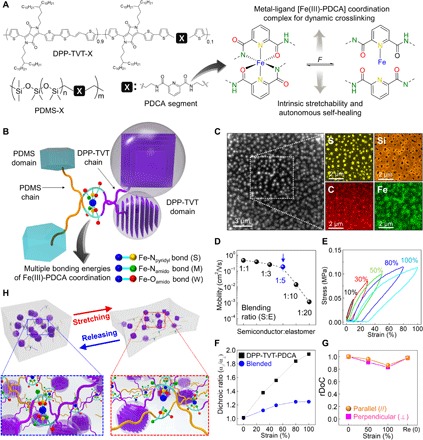Fig. 1. Design and characterizations of strain-sensitive, stretchable, and self-healable semiconducting film.

(A) Chemical structure of DPP semiconducting polymer, PDMS, and PDCA moiety introduced in both polymer backbones as dynamic bonding sites through metal-ligand interaction. Structure of the [Fe(HPDCA)2]+ moiety that is reversible dynamic bonds by force. (B) Schematic illustration of DPP and PDMS dynamically cross-linked through Fe(III)-PDCA complexation. (C) STEM dark-field and STEM-EDS elemental mapping of the DPP-TVT-PDCA (1):PDMS-PDCA-Fe (5) blend film. (D) Field-effect mobilities of the blend film organic thin-film transistors (OTFTs) (source and drain electrode: Au, 40 mn; dielectric layer: SiO2, 300 nm; gate electrode: highly doped silicon substrate) as a function of blending-weight ratio (semiconductor:elastomer). (E) Strain cyclic testing of the blend film (1:5). (F) Plot of dichroic ratio (α⫽/α⊥) of 1:5 blend film as a function of strain. (G) Relative degree of crystallinity (rDoC) calculated from (200) peak for both “parallel” and “perpendicular” directions to x-ray beam line. (H) Proposed mechanism for reinforcement of stretchability in blend film via metal-ligand dynamic bonding based on analyzed information.
